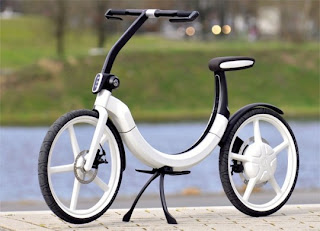Back in August of 2003, about 45 million of us across eight states lost our power for a couple of days or more. All because a tree fell on a power line somewhere in Ohio. Carnegie Mellon University research shows we're still suffering around 12 blackouts a year that each time affect at least 50,000 folks like you and me.
And that brings me back to one of my favorite topics, distributed generation. also known as onsite generation or decentralized generation. Need to include microgrids as well. A microgrid has a number of distributed generation sources and loads, and usually is connected to the macrogrid.
The Federal Government, especially the military, likes the idea of microgrids. Should someone decide to attack our national infrastructure in a big way, microgrids can form functional islands that maintain the flow of power. They can keep essential services up and running. Sort of like the Internet. When a section of the net stops working, the data packets switch to an alternate route and get to their ultimate destination without any noticeable delay. That's an advantage of decentralization.
But decentralization requires multiple power sources rather than a few centralized generators. You know, like all those computers and servers on the Internet that initiate and disperse data packets. The problem is finding power sources that can be sprinkled around the landscape inexpensively and cleanly. Well, here's a gadget on my Bellwethers' list that seems to fill the bill.
Bloom Energy Servers, AKA Bloom Solid Oxide Fuel Cells, produce "clean, reliable, affordable electricity at a customer's site." The cells convert heat into electricity through a clean electro-chemical process rather than grungy combustion.
A cell is nothing more than a specially formulated ceramic plate that acts as an electrolyte, sandwiched between an anode and a cathode, both of which are thin ink coatings on the plate. When heat from natural gas or biogas is applied to the anode coating, a chemical process produces electrical current. It's similar to a battery.
According to the Bloom marketing site...
They are like batteries except they are always on.
Each Bloom Energy Server provides 100kW of power, enough to meet the baseload needs of 100 average homes or a small office building... day and night, in roughly the footprint of a standard parking space. For more power simply add more energy servers.
Bloom Energy is a Distributed Generation solution that is clean and reliable and affordable all at the same time. Bloom's Energy Servers can produce clean energy 24 hours per day, 365 days per year, generating more electrons than intermittent solutions, and delivering faster payback and greater environmental benefits for the customer.So the next time the lights go out and you're groping around in the dark for a flashlight, think about a clean, quiet generator in your neighborhood, powered by solid oxide fuel cells. Might be a good way to stay ahead of the blackouts.
